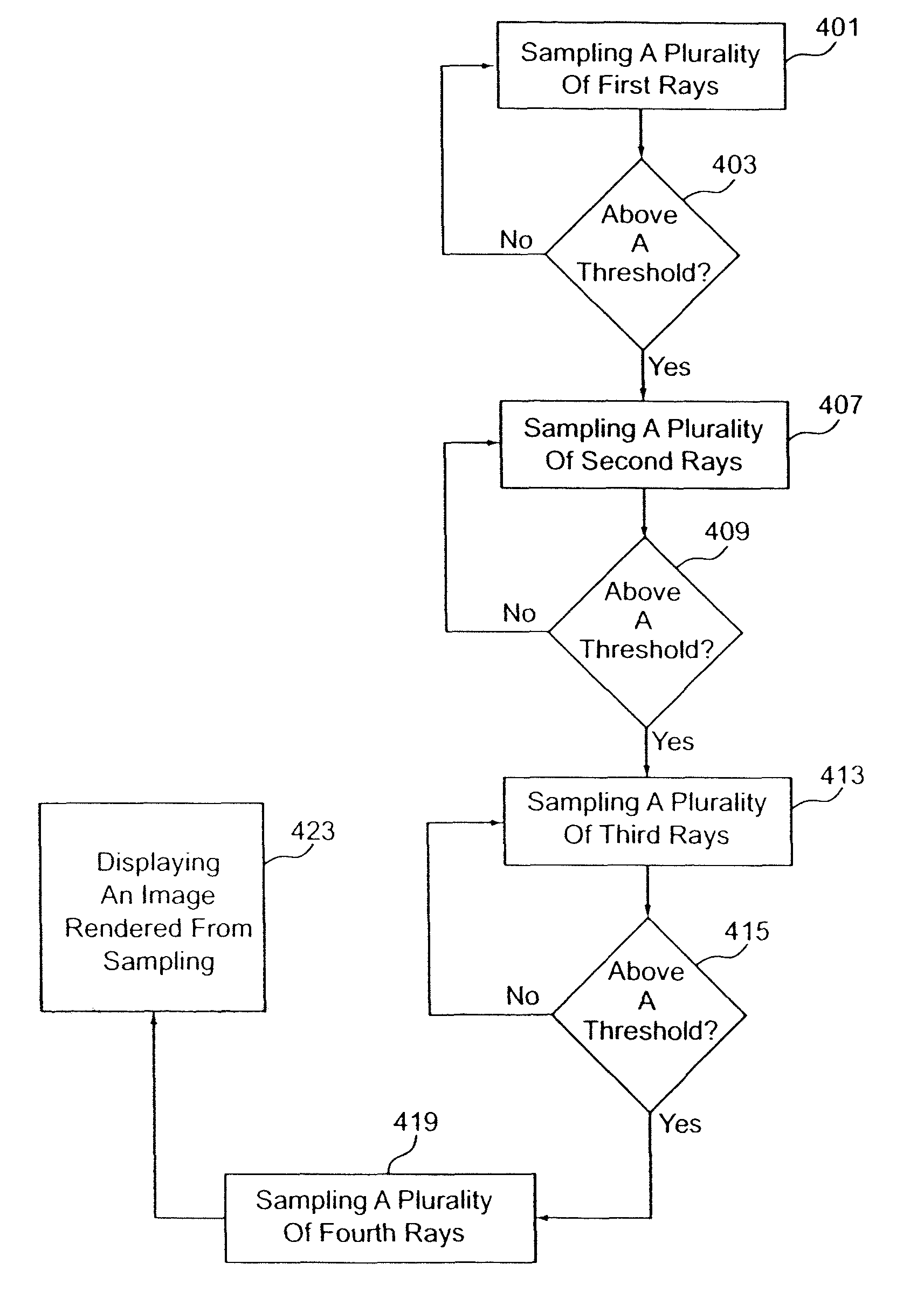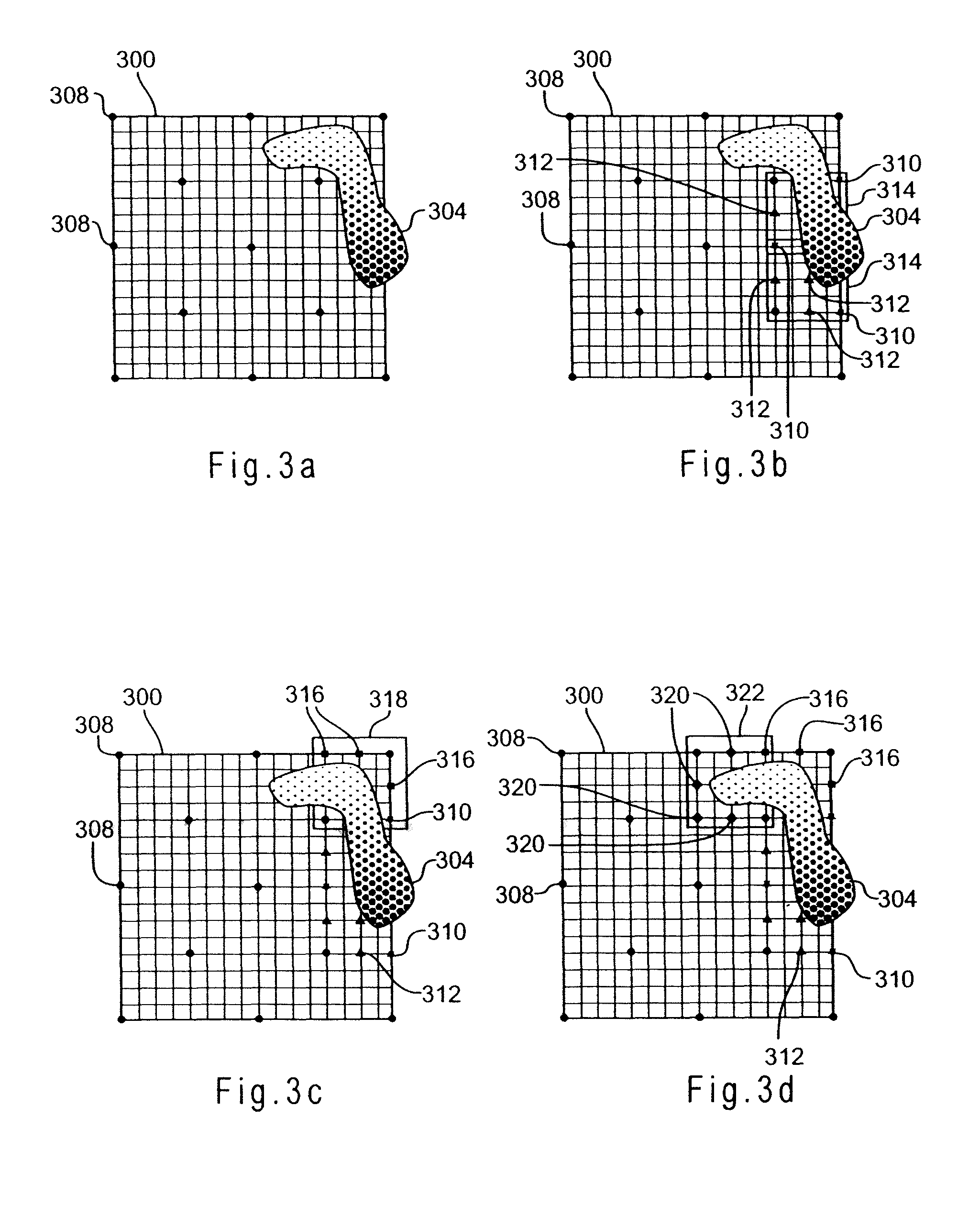Volume rendering using N-pass sampling
a volume rendering and sampling technology, applied in the field of medical imaging, can solve the problems of poor image quality, even more problematic degradation, degradation of information processing, etc., and achieve the effects of increasing the resolution of an object, increasing the rendering speed, and less density
- Summary
- Abstract
- Description
- Claims
- Application Information
AI Technical Summary
Benefits of technology
Problems solved by technology
Method used
Image
Examples
Embodiment Construction
[0016]An n-pass adaptive sampling technique is used to improve image quality for volume visualization, especially for interactive mode. The technique involves sampling more rays to capture fine features of images while eliminating unnecessary rays as much as possible. Coarse features are captured in a first pass, and more sampling rays are adaptively added in image areas, such as border or edge regions, in subsequent passes. Neighboring as well as local information is utilized to achieve better rendering quality.
[0017]FIG. 1 shows one embodiment of an imaging system 100 for volume rendering using n-pass sampling. The imaging system 100 is a computed tomography (“CT”) scanner, a magnetic resonance imaging (“MRI”) system, an ultrasound system, a positron emission tomography (“PET”) scanner, or any known or future medical or non-medical imaging system. In other embodiments, the imaging system 100 is a computer, a workstation, server, and / or an image database system.
[0018]The imaging sy...
PUM
 Login to View More
Login to View More Abstract
Description
Claims
Application Information
 Login to View More
Login to View More - R&D
- Intellectual Property
- Life Sciences
- Materials
- Tech Scout
- Unparalleled Data Quality
- Higher Quality Content
- 60% Fewer Hallucinations
Browse by: Latest US Patents, China's latest patents, Technical Efficacy Thesaurus, Application Domain, Technology Topic, Popular Technical Reports.
© 2025 PatSnap. All rights reserved.Legal|Privacy policy|Modern Slavery Act Transparency Statement|Sitemap|About US| Contact US: help@patsnap.com



